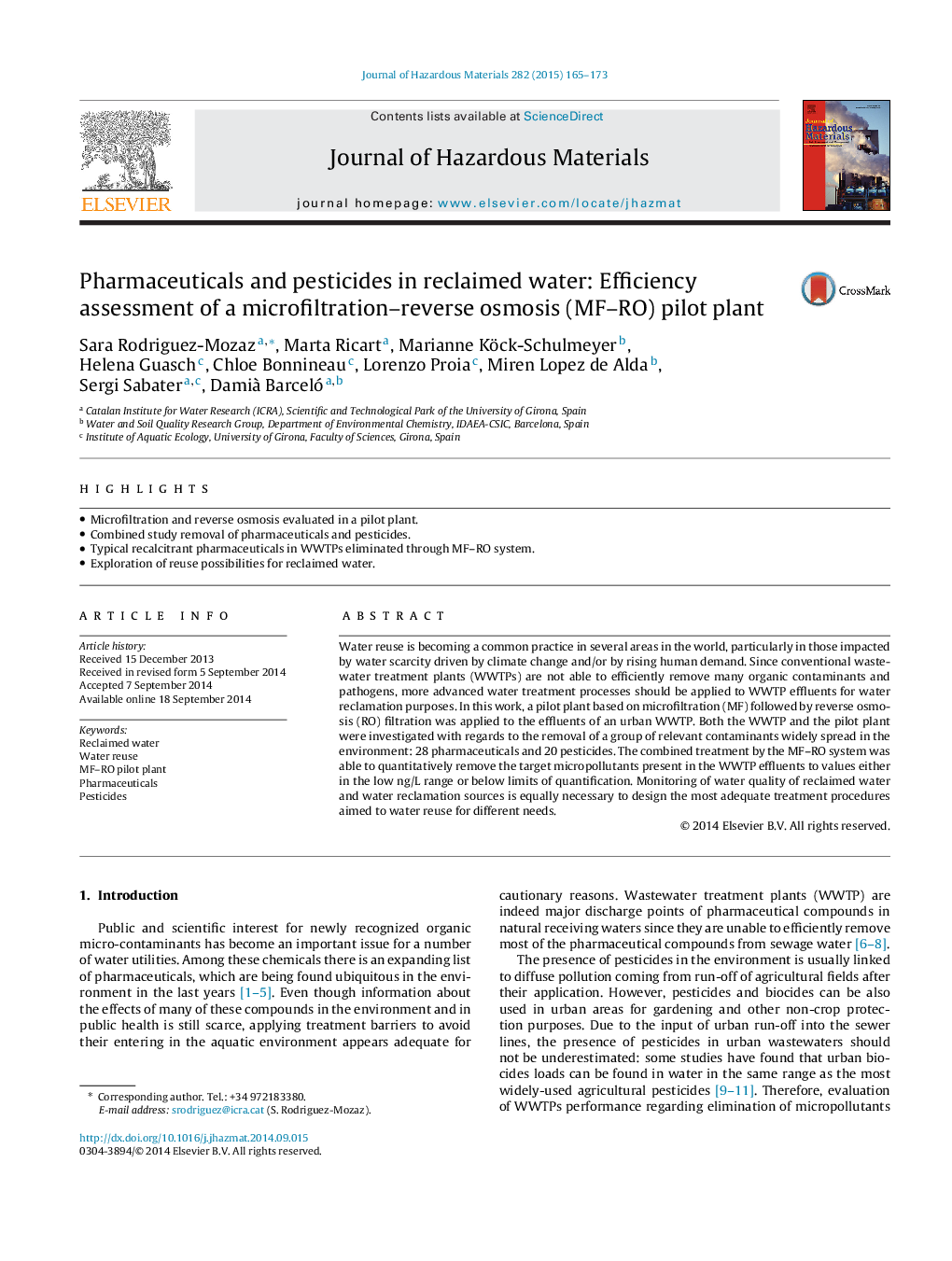| Article ID | Journal | Published Year | Pages | File Type |
|---|---|---|---|---|
| 576492 | Journal of Hazardous Materials | 2015 | 9 Pages |
•Microfiltration and reverse osmosis evaluated in a pilot plant.•Combined study removal of pharmaceuticals and pesticides.•Typical recalcitrant pharmaceuticals in WWTPs eliminated through MF–RO system.•Exploration of reuse possibilities for reclaimed water.
Water reuse is becoming a common practice in several areas in the world, particularly in those impacted by water scarcity driven by climate change and/or by rising human demand. Since conventional wastewater treatment plants (WWTPs) are not able to efficiently remove many organic contaminants and pathogens, more advanced water treatment processes should be applied to WWTP effluents for water reclamation purposes. In this work, a pilot plant based on microfiltration (MF) followed by reverse osmosis (RO) filtration was applied to the effluents of an urban WWTP. Both the WWTP and the pilot plant were investigated with regards to the removal of a group of relevant contaminants widely spread in the environment: 28 pharmaceuticals and 20 pesticides. The combined treatment by the MF–RO system was able to quantitatively remove the target micropollutants present in the WWTP effluents to values either in the low ng/L range or below limits of quantification. Monitoring of water quality of reclaimed water and water reclamation sources is equally necessary to design the most adequate treatment procedures aimed to water reuse for different needs.
